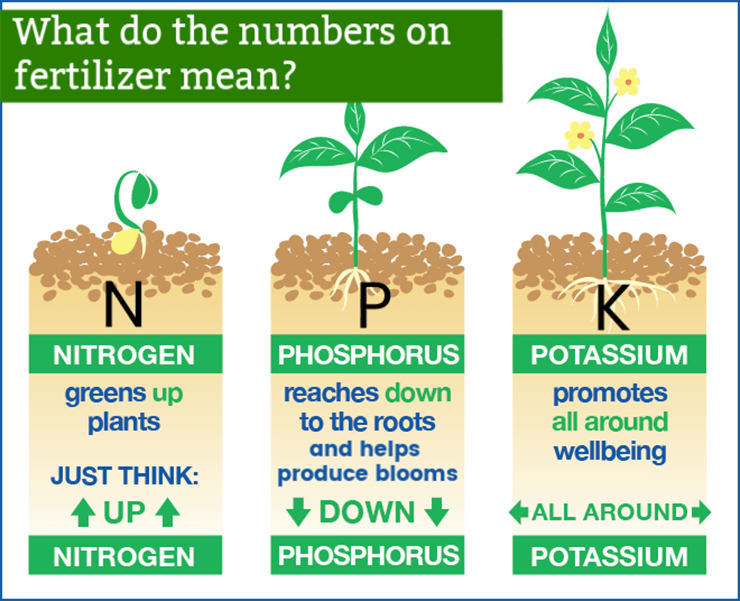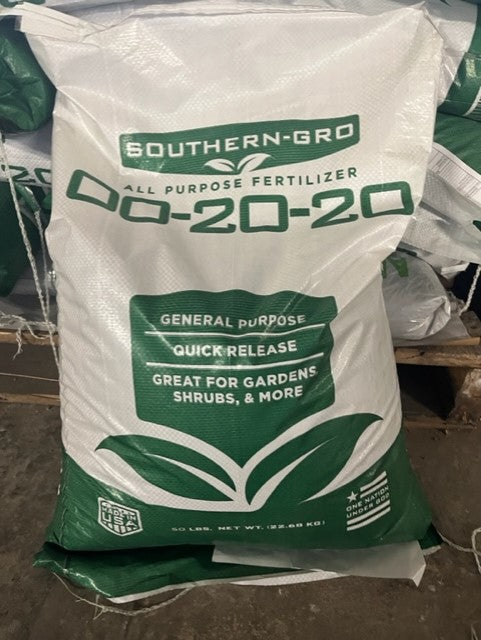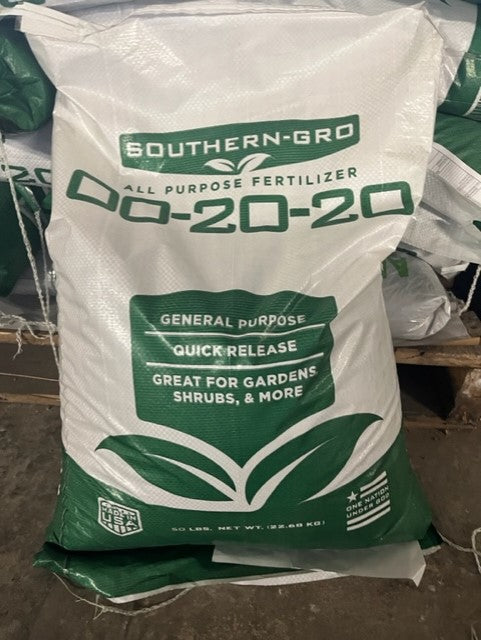ATHENS SEED CO
0-20-20 FERTILIZER 50 lbs
0-20-20 FERTILIZER 50 lbs
Couldn't load pickup availability
50 Lb. 0-20-20 Fertilizer
What is 0-20-20 Fertilizer?
0-20-20 fertilizer is a mixture that contains zero nitrogen. The three numbers are called N-P-K numbers and represent nitrogen (N), phosphorous (P), and potassium (K).
These are the three fundamental nutrients used by plants, and the rest of the fertilizer blend is made up of filler material.
Each number stands for the percentage of nitrogen, phosphorous, or potassium (actually, it's potash, which contains potassium) within the mix. So a bag of 0-20-20 fertilizer is made up of:
- 0% Nitrogen
- 20% Phosphorous
- 20% Potash
- 60% Filler
Obviously plants need to derive nitrogen from the soil, so why would we use a zero nitrogen fertilizer at all?
Why Use 0-20-20 Fertilizer?
Almost every other type of fertilizer will contain some percentage of nitrogen (the first number). Even in cases where people are avoiding nitrogen, they'll still opt for something like a 6-24-24 fertilizer to replenish nitrogen some. And that's part of the key to the mystery.

The reason people seek out or mix their own 0-20-20 blend is because they intend to fertilize their gardens or lawns during the late fall. They consider this special recipe to be a winterizing fertilizer.
You'll even find high-phosphorous and high-potassium fertilizers marketed and sold as "winterizers."
There's two reasons for this:
- Plants use little to no nitrogen during the winter.
- Rain and snow will leach nitrogen away from the soil during this time.
The first reason is easy to understand. Plants consume little to zero nitrogen during these dormant months. Why this happens is a biological subject for another discussion, but it is true.
The second reason has to do with the process of leaching, where water can run through soil (the looser and sandier the soil, the worse it is) and wash away the nitrogen stored there.
This leads us to the obvious conclusion: why waste money and resources adding nitrogen to soil where it won't be used and will be leached away? The answer is we shouldn't. It's a complete waste!
However, stating the conclusion that simply makes it sound like theres not a few more details to consider. There are such things as organic fertilizers that contain slow-release nitrogen.
And when this is done to thicker, more clayish soil, it makes nitrogen available immediately when spring comes and plants start growing their roots and tops again. It may not be much, but it's better than zero.
Or, you can fertilize the soil at the end of the winter season and be in even better shape, which is what I recommend if you have the time to plan for it and execute the plan.


